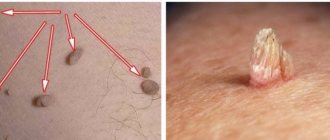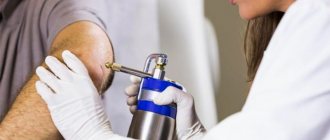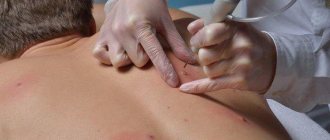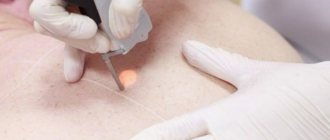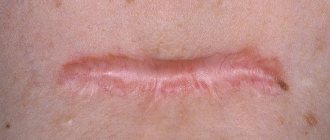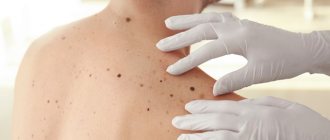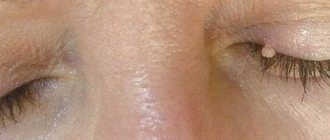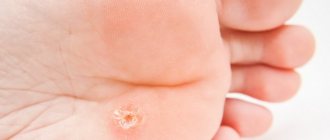Papillomas are skin tumors that are growths in the form of balls and threads. They are of viral origin. Pathology on the eyelid usually appears in older people. Those over 55 should remember that papillomatosis must be treated. There is a high degree of risk that the formation will degenerate into malignant.
In the latent phase of the disease, which can last a year or more, a person does not even suspect that he is a carrier of a viral microorganism. Papillomas arise unexpectedly, under favorable conditions for the virus that causes them. It manifests itself in the upper layers of the skin - the epidermis.
Papilloma can appear anywhere in the lower or upper eyelid. It causes serious discomfort to the patient in the form of itching and burning pain. The unpleasant sensations that accompany papilloma are also expressed in the false sensation of sand or dust getting into the eye, and disruption of the function of the tear ducts. The organ of vision rarely blinks, and “dry eye syndrome” appears. It happens that the eyelids do not close completely, droop, or retract. The affected eyelid itches, and the person involuntarily begins to rub the eye area with his hands. This does not bring relief. On the contrary, the eyelid turns red and swells.
Moreover, by doing this, we attract a secondary infection to the eyelid area. This can lead to a worsening of the disease, a complication in the form of decreased visual acuity. Doctors have at their disposal modern techniques for removing papillomas without suturing. The procedure is painless for the patient, and the wound heals quickly on its own.
How do papillomas appear?
Although papillomas on the eyelids are much more common in older people, it is possible to become infected with the microorganism in childhood. Even indirect tactile contact with a carrier who is not even aware of the infection leads to the penetration of foreign DNA into the chromosome of a healthy epidermal cell. Then an accelerated parasitism of the virus occurs on the skin of the infected person, and papillomas appear.
The virus can enter and become active as a result of direct contact, that is, through a handshake, kiss or intimate relationship. This can also happen indirectly when people touch the same objects: clothes, furniture, sinks. The risk of infection is quite high when simultaneously using personal hygiene products, such as a razor, towel or, say, shared utensils.
Infection can even occur during childbirth. The transfer of the papilloma virus from mother to child is possible if it is on the vaginal mucosa. Antigens caused by the disease can be suppressed by the immune system for a very long time. But when the protective functions of the immune system weaken, the cell begins to show signs of a failure of the genetic program. They begin to rapidly divide, and foreign body-like plaques appear on the eyelids.
Complex therapy can prevent the spread of eyelid skin deformation. Removal of papillomas on the eyelid is completely safe. For example, the laser method or radio waves leave no traces. To prevent this virus, medications are prescribed.
Reasons for removing papillomas
These skin formations are not painful, but experts recommend removing them. The reason for such recommendations is the frequent damage to papillomas in the process of life (by clothing, for example), which leads to the formation of a wound through which many microorganisms penetrate into the body, leading to various unpleasant consequences - from scars during the healing period to inflammation of the lymph nodes (lymphadenitis).
When a papilloma is torn off, it must be treated with hydrogen peroxide, covered with a sterile gauze bandage and contacted at the clinic to remove the remains. Removal is also recommended because some types of human papillomavirus can transform the neoplasm into a malignant tumor. This happens rarely, however, it does happen.
Therefore, in each case of a neoplasm, the type of virus that provoked it must be determined. After the tests, the doctor cleanses the skin and prescribes immunomodulatory treatment.
Modern clinics offer many methods for removing such tumors painlessly and quickly. As already mentioned, it is impossible to completely eliminate the human papillomavirus from the blood, but it is possible to reduce its activity with medications. To achieve this, immunologists specifically prescribe drug therapy to enhance immunity.
Diagnostics and varieties
The type of tumor is determined by a dermatologist during an external examination. Usually this is quite enough, but it happens that additional tests need to be taken. If the doctor suspects a type of papilloma that is uncharacteristic of a benign tumor, he orders the patient to draw blood from a vein.
It happens that histology is required. This is a study of tissue structure; it is prescribed for obvious visible deviations from the norm. It is possible to study at the cellular level - cytology. For this purpose, a part of the papilloma of the eyelid is taken for a detailed examination of the cellular structure.
External examination can reveal two types of papillomas.
Keratopapilloma is growths on the skin of horny scales and destructive cells arranged in a dense layer. This is a hard element due to the presence of keratin protein, which has an elongated appearance. In terms of color, the growth does not stand out against the background of the eyelid. Keratopapilloma grows in the eyelash area. This type of neoplasm occurs between the ages of 30-40 years. In old age, they arise due to the body’s reduced ability to regenerate at the cellular level and cleanse itself of waste cells.
Fibropapilloma. In fact, it is a tumor consisting of skin, which may include cartilage. It exists in two variations: hard dermatofibroma and soft acrochordon. To establish the first type of formation, it is enough to press lightly on it. A hole should appear, which disappears after a few seconds. Soft acrochords look like a wrinkled bundle and are brown in color.
Papillomas increase in size gradually, and their roughness becomes more and more clearly visible. The patient may mistakenly assume that he has a pimple or stye as a result of a common cold. The infection must be identified “in the bud” and treatment must begin. A specialist will reliably assess the degree of risk, since it is established only during laboratory tests.
Modern minimally invasive removal methods will effectively remove papilloma from the root of the growth. They are completely painless. A dermatologist will diagnose and prescribe a treatment method.
Comparative table of methods for removing papilloma on the eyelid
| Removal method | Advantages | Flaws |
| Medication | – moderately effective; - safe; – can be used at home as prescribed by a doctor | – applies only to small, recent formations. |
| Chemical | - simple; - cheap; – painless | – very dangerous, possible burns and scars |
| Cryodestruction (liquid nitrogen) | – average efficiency; - simple; – painless | – requires strict control over the depth of impact; – possible burns and risk of re-formation; – anesthesia is required in case of a large papilloma and several procedures |
| Radio wave | - high efficiency; – painless; – contactless; – the possibility of cytological analysis of distant formations; – not traumatic; - average price | – there are contraindications for use. |
| Electrocoagulation | – highly efficient; – possibility of postoperative histological analysis of the removed growth | – risk of scar formation and relapses |
| Surgical | – possibility of complete removal | – risk of bleeding; – formation of scars |
| Laser | – highly efficient; – operational; – painless; – non-contact (fast healing) | – there are contraindications for use |
| Folk remedies | – used at home; – used as an addition to the main treatment | – little effective; – Unsafe; – Use only under the supervision of a specialist. |
All presented methods have advantages and disadvantages. Removing papilloma in such a delicate place as the eyelid requires a careful approach. Therefore, to resolve this issue, you need the advice of an experienced, qualified specialist.
Indications for removal
Removal of papillomas on the eyelid is a necessary measure to avoid complications. You should urgently seek the help of a cosmetologist if you feel or notice:
discomfort, itching or pain;- swelling or redness;
- Inadequate closure of the eyelids;
- Bloody issues;
- Darkening of the eyelid, its deformation;
- Node growth
You should not allow tumors to grow. This leads to serious difficulties: blurred vision or narrowed vision. Papillomas lead to physical and moral discomfort. Often people suffering from them experience nervous breakdowns.
The eyelid, being under constantly changing load, is not able to adapt to it. The eye begins to open with difficulty, and the surrounding tissues sag. The disease prevents the natural washing of the sclera with tears, which have antibacterial and moisturizing properties. In addition, it is easy to injure the affected area during routine hygiene procedures.
Fine-grained papillomas are very unpleasant. They grow on the inner surface of the eyelid. Adjacent directly to the eye, they rub the eyeball and lead to an inflammatory process in the sclera. Soft acrochords are placed on thin legs, which are quite easily torn off with one careless movement. As a result, heavy bleeding occurs, since inside the papilloma is closely connected with the capillaries.
The presence of a virus manifested in the form of papillomas negatively affects the protective abilities of the eye. This leads to other serious ophthalmological diseases: blepharitis, conjunctivitis, inflammation of the lacrimal glands. This is no longer a joke, it is fraught with damage to the structure of the eyeball. There are also so-called highly oncogenic strains of this virus that cause cancer. A polymerase reaction carried out in laboratory research can accurately identify which strain of the virus caused the growths.
Removal methods and laser treatment
In total, in modern medicine there are 4 main ways to remove such tumors. These include:
- a surgical method that involves cutting off the papilloma using an ordinary scalpel;
- laser method, which has many advantages over conventional surgery, since with the help of a laser a tumor can be removed at any depth without scars and blood;
- diathermocoagulation method, which involves current burning of a tumor on the surface of the skin;
- a cryotherapy technique that eliminates formations using liquid nitrogen or carbonic acid.
Each patient can choose a method for removing papilloma independently, however, in modern medicine, excision using a laser is increasingly used. The laser beam is highly precise and affects the tumor without going beyond its actual boundaries and without injuring the adjacent healthy skin.
In addition, during the removal process, the laser is simultaneously capable of disinfecting the wound, which reduces the risk of infection. With laser removal of papillomas, the wound heals very quickly. After removal, there are no scars on the skin, the wound is covered with dry skin, which disappears in a couple of days, and after a month, the color of the skin under the former papilloma completely matches the color of the skin around it.
Types of papillomas
Papillomas that appear on the upper as well as on the lower eyelid may differ in appearance. The growths can have different colors and shapes, have a smooth, fine-grained, or bumpy surface.
Depending on the ability for malignant degeneration, neoplasms are divided into two types:
- Low-oncogenic, which are not characterized by rapid growth, and the risk of their degeneration is minimal. Wondering how to get rid of papilloma in this case, the patient learns that large-scale surgical intervention is not required to remove them.
- Highly oncogenic growths characterized by intensive growth and a high risk of degeneration into malignant neoplasms.
In order to correctly determine the type of papilloma and begin timely treatment, it is necessary to consult a specialist as early as possible.
Reasons for HPV activation
More than 80% of humanity is infected with HPV, but not everyone develops papillomatosis. The human immune system suppresses the vital activity of the virus, preventing it from actively penetrating cells. Negative events in a person’s life can undermine the body’s immune defense, thereby creating a favorable environment for the reproduction and parasitism of the virus. Such events include the following:
- excessive exposure to ultraviolet radiation (unusually long stay in the sun),
- aging and weakening of the body (after 35 years),
- prolonged overwork (exhausting physical or mental work),
- prolonged stress or serious shock,
- severe hypothermia of the body,
- bad habits (alcoholism, drug addiction, smoking),
- violation of the microbiological protection of cells (after taking antibiotics or hormonal drugs),
- illness or hormonal imbalance.
Prevention
It is easier, faster and cheaper to prevent any disease than to cure it. Therefore, in order not to wonder how to remove papilloma, it is advisable to prevent infection, as well as regularly strengthen the body’s defenses. It is important to remember to take precautions when visiting public places (swimming pools, gyms, saunas). We should not forget that unprotected sexual contact can cause infection not only with HPV, but also with other, no less serious diseases.
It will be easier for the body to resist diseases if you eat well, spend a lot of time in the fresh air, and don’t forget about physical activity.
Having discovered a papilloma on your body, it is advisable to immediately visit a specialist. Only he, based on tests, will be able to determine the type of neoplasm and select the appropriate method of treating or eliminating it.
Papillomas on the eyelids are especially dangerous due to their proximity to the visual analyzer - a very sensitive and delicate organ. Therefore, any type of treatment should be carried out after examination by a specialist and under his close supervision.
Main indications
Most often, the decision to immediately remove a tumor on the eyelid is made by an ophthalmologist in the following cases:
- visual impairment;
- progression and significant increase in the size of the tumor;
- complaints of discomfort and the patient’s desire to eliminate a cosmetic defect;
- increased risk of malignancy (malignancy);
- confirmation by laboratory and instrumental studies of the malignant nature of the tumor.
Main reasons to contact us
Qualified specialists
Patients are seen in our clinic by doctors of the first and highest medical categories, including doctors and candidates of science. Many years of practical experience and a large number of successfully performed surgical interventions (more than 3,000) allow us to provide effective treatment even in the most complex cases.
Effective treatment
The use of the Surgitron radio wave apparatus (USA) makes it possible to perform minimally invasive operations with the shortest recovery period. The procedure completely eliminates the possibility of infection, since the electrode does not come into contact with the patient’s skin. The operation is almost bloodless, leaving no visible scars. This method allows you to remove several formations in one go and minimizes the likelihood of relapse.
Comfort and service
There are no queues at our clinic, as appointments are by appointment only. All manipulations are carried out in bright rooms using the latest equipment. You can call and make an appointment at a convenient time with any specialist. You will also receive additional information by phone by asking our administrators any questions you may have.
